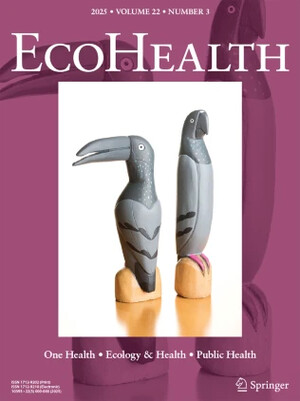
Immunogenicity of the Newcastle disease virus vaccine La Sota, in introduced birds under intensive and extensive management conditions
Abstract
The study was designed to evaluate the immune response of chickens among different poultry management following challenge to live La Sota vaccine and further more investigated the lower antibody response detected in traditionally managed chicken, by testing the hypothesis that veterinary intervention (treatment with anti-helminthic, antibiotics and vitamin supplements), prior to vaccination, would improve the antibody response to live NDV vaccination. Even if, a protective level of antibody (> 4 Log 2HAI) was detected in all chickens following vaccination, antibody titres were significantly higher (p < 0.05) in the intensively managed chickens Geometric Mean Titre (GMT) 85.4 when compared with the traditionally managed chickens GMT 59.3. From multivariable analysis; following a single live ND virus vaccine at the age of 21 day, chickens rearing in intensive production system were 8.6 times more likely to have high titre (128 vs 32) compared to those rearing in backyard free ranging system. The lower ND-HI titre in extensively managed chickens recorded in our study had be explained by impaired immune-competence due to immune-suppressive of concurrent infection. The study investigated the effect of concurrent parasitic and viral diseases on the immune response; as well as differences in protection among indigenous ecotype and exotic breed of chicken. The hypothesis that parasitism contributes to a poorer response to vaccination was proven (p < 0.05). Chickens that received veterinary treatment (de-wormed chickens) prior to vaccination were approximately 14 (i.e. 14.3) times more likely to have a titre of 128 when compared to titre 32 showing evidence for veterinary intervention had detectable effect on humoral response of chicken to vaccination (p< 0.05). Moreover; it was evident that HI titer differed between individual chickens and was influenced by breed types. Multivariate analysis showed that indigenous chickens were about 7 times more likely to have high HI titre (128 vs 32) compared to exotic breeds (p< 0.05). Though breeds differ genetically in their immune responsiveness to the antigen, and being protected following challenge; difference in their susceptibility to the virulent challenge virus needs to be ruled out in order to facilitate the improvement of disease-resistant traits.
Citation
Abera, B., Lynch, S., Duguma, R., Dessie, T., Bettridge, J., Wigley, P. and Christley, R. 2017. Immunogenicity of the Newcastle disease virus vaccine La Sota, in introduced birds under intensive and extensive management conditions. Livestock Research for Rural Development 29(6) Article #110.









